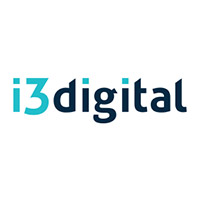Legacy content management systems (CMS) can be a major obstacle for membership organisations that want to improve their online presence. These systems are often outdated, difficult to use, and lack the features and functionality that modern organisations need.
Migrating to a new CMS can be a daunting task, but it is essential for organisations that want to stay ahead of the competition. This guide will walk you through the essential steps involved in migrating from a legacy CMS to a new one.
Step 1: Evaluating the Current System
The first step is to assess your current CMS. This includes identifying the limitations of the system, as well as the features and functionality that you need in a new CMS. You should also consider the technical requirements of your organisation, such as the size of your website and the number of users.
Step 2: Selecting the Right CMS
Once you have assessed your current CMS, you can start to look for a new one. There are several different CMSs available, so it is important to choose one that meets your specific needs. You should consider factors such as the cost of the system, the level of support that is available, and the features and functionality that are offered.
Step 3: Content Audit and Clean-up
Analyse your content to decide what needs to be migrated, archived, or discarded. Some content might be outdated or irrelevant, while others might require updating or reformatting. A content audit helps improve content quality, reduce redundancy, and identify gaps.
Step 4: Content Mapping and Migration Planning
Plan the migration process, including who will be involved, the timeline, and the order in which the content will be migrated. Develop a content map that outlines how content will be transferred from the old system to the new one, including reformatting needs, and identify potential issues that may arise during the migration process.
Step 5: Develop a Test Plan
Create a comprehensive test plan to ensure the new CMS works as expected. The plan should include functional testing, user acceptance testing, integration testing, and performance testing. Ensure that the migrated content appears correctly and the functionality of the new CMS meets your business needs.
Step 6: Executing the Migration
Once everything is in place, you can begin the migration. It’s generally a good idea to do this in stages, starting with less critical data. This phased approach allows you to resolve any issues that arise without impacting the entire system.
Step 7: Training and Support
Once the new CMS is in place, provide training to all users to ensure they can effectively use the system. Also, establish a support system to address any issues or questions that arise post-migration.
Step 8: Continuous Evaluation
The migration doesn’t end with deployment, regularly assess the new CMS to ensure it is meeting your business needs. This process allows you to make necessary adjustments and updates, ensuring the system remains efficient and effective.
Additional Tips
- The migration process will affect everyone in your organisation, so getting buy-in from all stakeholders before you begin is important.
- Let your users know about the migration and what they can expect. This will help to reduce any confusion or anxiety they may have.
- Keep in mind that there will always be unexpected challenges during migration. Be prepared to deal with them rationally and calmly.
In conclusion
Migrating from a legacy CMS to a modern one is a significant undertaking that requires careful planning and execution. However, with a well-thought-out strategy and the right approach, membership organisations can achieve a smooth transition, ensuring better content management and improved business processes.
i3 Digital is an experienced team of straight-talking digital experts, that specialises in delivering integrated digital platforms. Contact us to learn more.










Leave A Comment